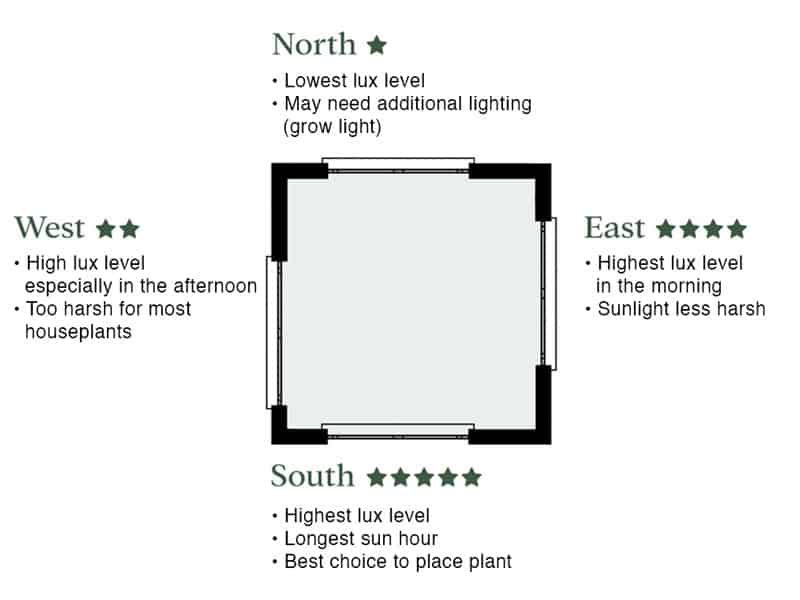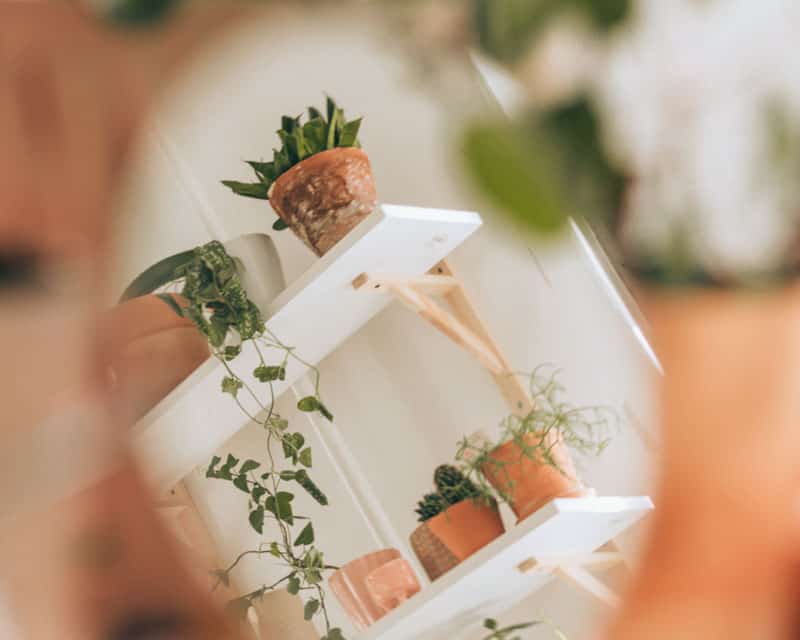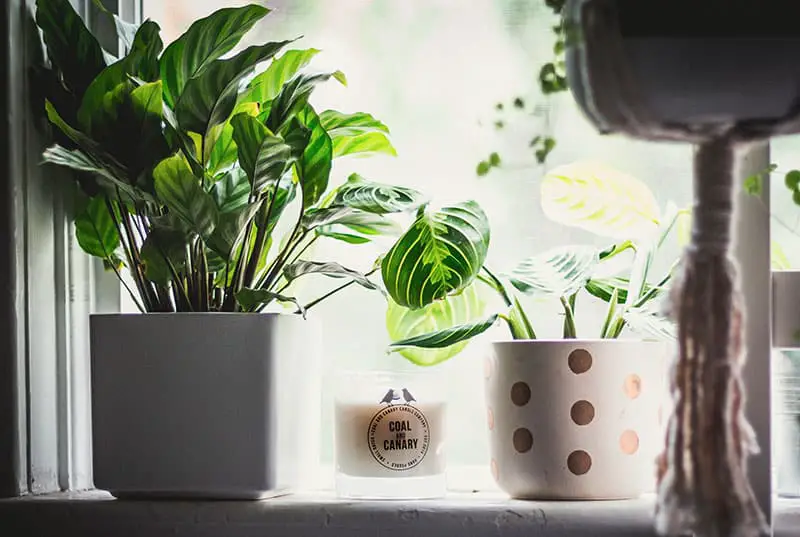
When caring for your Calathea, it is important to remember that they require the right amount of light in order to thrive.
Calathea plants need at least 8 to 10 hours of bright, indirect light with 8 hours of darkness for optimal growth. Although they can grow in low light conditions, the plants cannot tolerate direct sunlight.
In this article, you will learn in detail about Calathea light requirements, tips for getting the right amount of lighting and how to make sure they thrive in low light conditions.
Let’s get started!
What are Calathea Light Requirements
To provide the ideal light condition for Calathea, you must consider three important factors: Light intensity, duration and quality.
1. Light Intensity: How much light do Calathea need
Light intensity refers to how much light Calathea can take.
Calathea needs sunlight for photosynthesis and produces energy for growth, but too much direct sunlight exposure will burn their leaves.
Calathea is tolerant of low light conditions but prefers bright indirect light at 10,000 lux or 1,000 foot candles.
You can provide the right intensity by measuring the light and find the right location for your Calathea plant:
How to Measure Light Intensity:
Although it may not be accurate, I usually measure the intensity of light using a piece of paper and my hand.
Simply hold your hand 8 to 10 inches away from a white piece of paper in the area where you want to measure the intensity of the light.
If you can only see the blurred outline of your hand, then the lux level is about 10,000 to 15,000 lux. This is perfect for Calathea.
To be more accurate, you will need to measure the light intensity with a light meter.
Find the Right Location:
As I mentioned above, you can start measuring the light intensity for every room in your house.

However, in general, the ideal light intensity for Calathea is the bright indirect light coming from the south-facing window. North-facing windows are usually too weak, while west-facing windows can be too intense.
West-facing windows should be shaded with a sheer curtain to reduce the intense afternoon sun.
2. Light Duration
The second light requirement is the light duration also known as photoperiod. It measures the number of continuous hours of light Calathea plants receive per day.
Calathea plants need at least 8 to 10 hours of bright indirect light a day. In winter, you might need to use a grow light in order to provide the same amount of daylight hours.
However, when using artificial light to grow a Calathea plant, be careful not to provide it with more than 16 hours of light.
After all, Calathea plants need darkness to increase their respiration rate, which is how they distribute the energy produced during photosynthesis for growth.
3. Light Quality
The last light requirement for Calathea is the quality of the light. This refers to the amount of blue, green, red, far-red light emitted from a light source.
A red light spectrum will help the Calathea plant to photosynthesize, while blue light encourages richer color in the variegations of Calathea plants.
Although your window uses film, it would only block ultraviolet light and not the red and blue light required by the plant.
More Tips for Better Light Condition
Use a mirror to redirect and reflect lights
If your plant is located in a dark corner, you can strategically use a mirror to redirect the bright light from nearby windows to that area.

To increase light for your Calathea plant, place it near a window with a mirror facing the outside. This will double the intensity of your lights as light from the window is reflected back to our plant by the mirror.
Rotate plant towards the light source
Do you notice that one side of your Calathea is growing more rapidly than the other?
This can happen when one side of the plant receives more sunlight than another. Try rotating your plants during watering to encourage more balanced growth.
Calathea in low light condition
Calathea is a tropical plant with the ability to survive in low light conditions. However, the plant will wilt if it does not receive any sunlight at all.

My old apartment has a north-facing window and doesn’t receive much natural light, especially during the winter months.
I’ve noticed that most of my houseplants struggle with no growth and long, leggy stems, but my Calathea plants don’t seem to have the same issue.
Well, I installed a grow light anyway to help my other houseplants. It was only after adding the grow light that my Calathea Medallion and the Calathea Ornata also flourished!
Also note that when your Calathea is in low light condition, the plant does not absorb as much water. Therefore, it would be a good idea to adjust your watering schedule so that it does not develop root rot.
Calathea in harsh sunlight outdoor
In their natural habitat, Calathea plants live under the canopy of the tall rainforests. Therefore, you can grow your Calathea outside as long as you have a warm climate and shade.
When exposed to direct sunlight, your Calathea plant is likely to fade both in color and patterning. Sunburned yellowing will also develop on the tips and margins of the leaf upon prolonged exposure.
Once Calathea leaves are damaged, you can’t fix them. You should do your best to provide proper care for the plant and help it manage until it grows new leaves.
Be sure to provide plenty of shade for this tropical plant if you want it healthy and grow well under harsh sunlight conditions outdoors!
In Conclusion
Whether you’re placing your Calathea indoors or out, they are not picky about light as long as it is shaded from harsh direct sunlight.
Other than light requirements, there are other factors that you need to know about maintaining a healthy Calathea plant. You can learn more with my Calathea care guide!
If you have more questions about Calatheas or other houseplants let me know!

